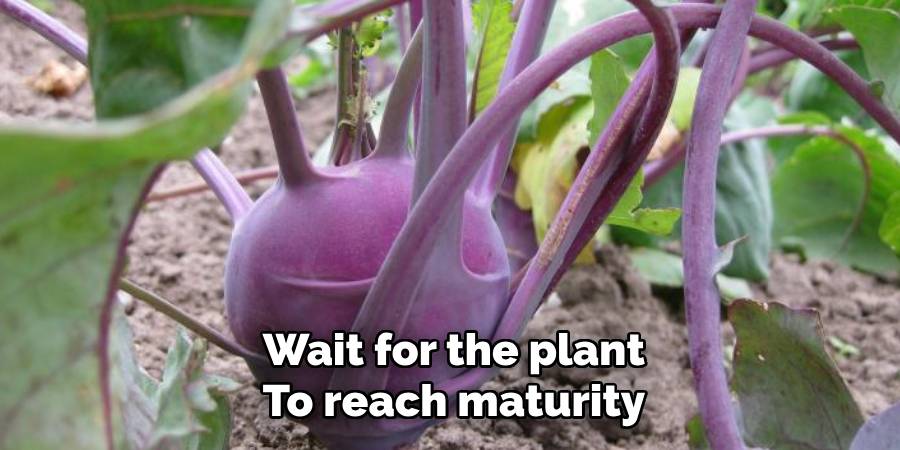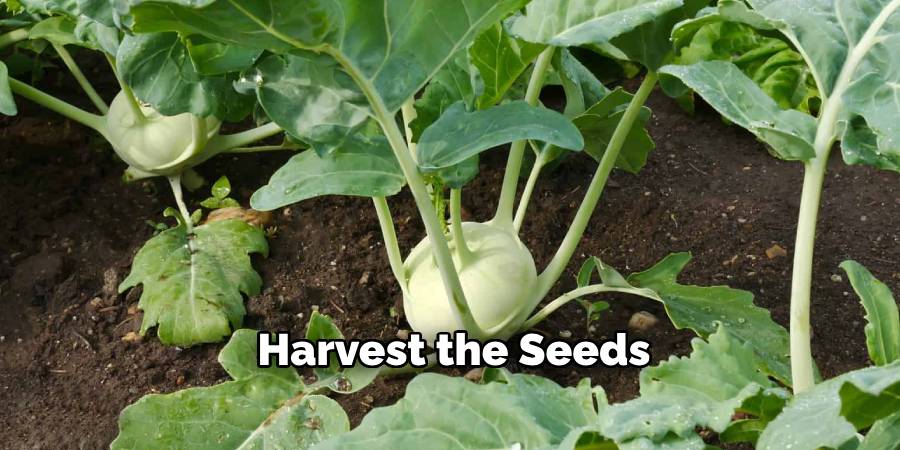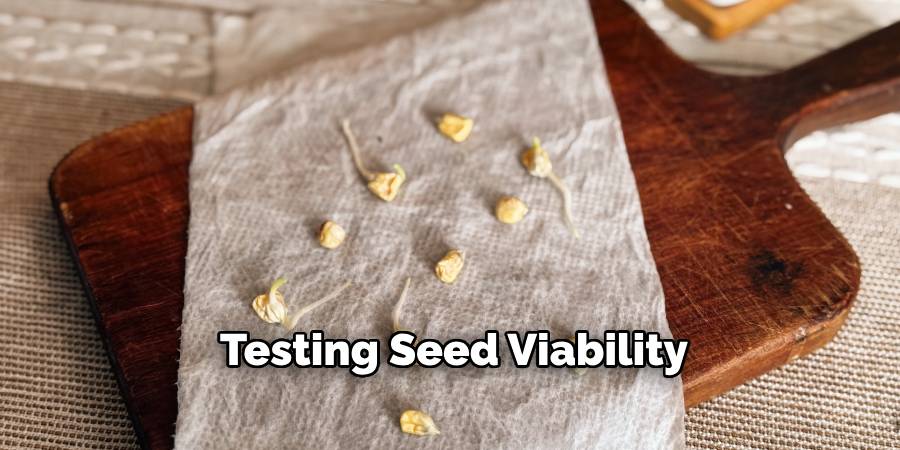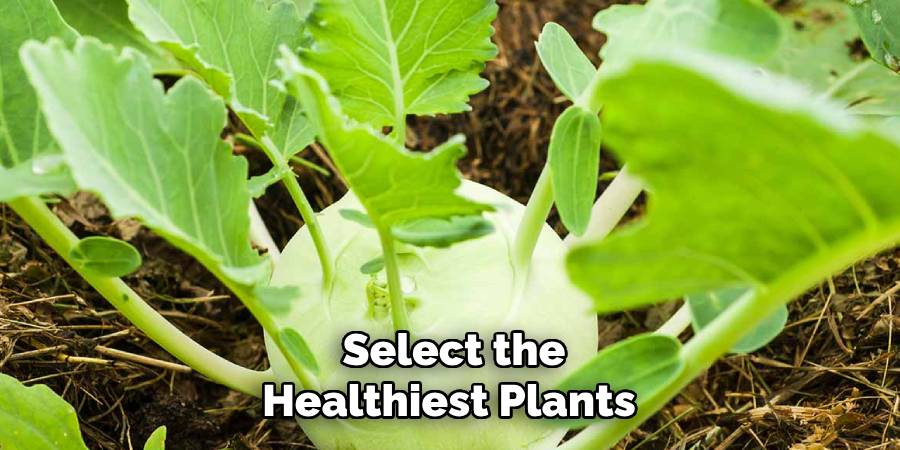Kohlrabi, a member of the cabbage family, is a versatile and nutritious vegetable that can be grown in most home gardens. Collecting its seeds is a rewarding process that allows gardeners to save money and ensure a consistent supply of this unique crop.

This guide on how to collect kohlrabi seeds will walk you through the steps to properly collect, store, and use kohlrabi seeds, helping you cultivate a thriving garden year after year.
Understanding Kohlrabi’s Life Cycle
To successfully collect kohlrabi seeds, it is essential to understand its life cycle. Kohlrabi is a biennial plant, meaning it completes its life cycle over two growing seasons. During the first year, the plant focuses on vegetative growth, forming its characteristic bulb-like stem and leafy greens. It is only in the second year, after experiencing a period of cold temperatures (a process known as vernalization), that kohlrabi produces flowers and sets seeds.
Once the plant begins flowering in its second season, seedpods will form, containing the seeds you can harvest. By understanding this two-year cycle, you can plan accordingly and ensure the best results when saving seeds.
9 Step-by-Step Guidelines on How to Collect Kohlrabi Seeds
Step 1: Wait for the plant to reach maturity
Allow the kohlrabi plant to complete its full growth cycle through the first year. During this time, the plant will develop its edible bulb and greens but will not yet produce flowers.

It is important to ensure that the plant remains healthy and strong, as this will set the foundation for successful flowering and seed production in the second year. Avoid harvesting the bulb or stressing the plant to encourage optimal maturation.
Step 2: Monitor the Flowering Stage
During the second year, the kohlrabi plant will enter its flowering stage. You will notice tall flower stalks emerging from the plant, bearing clusters of small yellow flowers. It is essential to keep an eye on the plant during this stage to ensure it remains healthy.
Provide adequate water and protect it from pests that may damage the flowers. Allow the flowers to fully develop and pollinate naturally, as this is a crucial step in producing viable seeds.
Step 3: Allow Seedpods to Form and Dry Out
Once the flowers have been pollinated, seedpods will begin to form on the plant. These pods are where the kohlrabi seeds will develop. Allow the seedpods to mature fully on the plant; they will change color and start to dry out as they ripen.
It is important to monitor this process closely, as overly dry pods can crack open and disperse seeds prematurely. To avoid losing seeds, consider harvesting the seedpods just before they are fully dry and allowing them to finish drying in a sheltered, well-ventilated area. This will ensure you can collect viable seeds for future planting.
Step 4: Harvest the Seeds
Once the seedpods have fully dried, carefully remove them from the plant. Place the dried pods in a large container or bag to prevent any seeds from being lost during handling. Gently crush the pods to release the seeds, taking care not to damage them in the process. Use a fine sieve or your hands to separate the seeds from any remaining chaff or debris.

Store the cleaned seeds in a cool, dry, and dark place, preferably in an airtight container, to maintain their viability until the next planting season. Make sure to label the container with the kohlrabi variety and collection date for reference.
Step 5: Store Your Kohlrabi Seeds
Once your kohlrabi seeds are cleaned and prepared, proper storage is essential to maintain their quality and ensure successful germination in the future. Place the seeds in an airtight container, such as a glass jar or a sealed plastic bag, to prevent exposure to moisture and air. Store the container in a cool, dry, and dark location, like a pantry or a refrigerator, to extend the seeds’ longevity.
For added protection against humidity, consider adding a silica gel packet to the container. Always label your storage container with the kohlrabi variety and the collection date to stay organized and ready for the next planting season.
Step 6: Label and Date Your Seeds
Proper labeling is crucial when storing kohlrabi seeds to ensure you can identify them easily in the future. Use a waterproof marker to write the name of the kohlrabi variety on a label or directly on the storage container.
Additionally, include the collection date to keep track of the seeds’ age, as germination rates can decrease over time. Clear and accurate labels will help you stay organized and prepared for future planting seasons, minimizing any confusion when it’s time to sow your seeds.
Step 7: Testing Seed Viability
Testing the viability of your kohlrabi seeds is an important step to ensure successful germination and a productive harvest. To test seed viability, take a small sample of seeds—typically 10 to 20—and place them on a damp paper towel. Fold the towel over the seeds, place it in a sealed plastic bag, and store it in a warm location, such as on top of a refrigerator.

Check the seeds daily, keeping the paper towel moist but not saturated. After 7 to 10 days, count how many seeds have sprouted. If a significant percentage of the seeds germinate, your batch is viable for planting. However, if only a few sprout, it may be time to replace your seeds with a fresher supply.
Step 8: Using Saved Kohlrabi Seeds
Once you have determined that your kohlrabi seeds are viable, you can prepare them for planting. Begin by selecting a suitable area in your garden that receives ample sunlight and has well-drained soil. Before planting, loosen the soil to promote healthy root growth and mix in compost to enrich the soil with nutrients.
Sow the seeds approximately 1/4 inch deep and space them about 2 inches apart. Water the area gently, ensuring the soil stays consistently moist but not waterlogged. With proper care, your saved kohlrabi seeds will soon sprout into thriving plants, ready to grow into crisp, delicious kohlrabi.
Step 9: Sharing Saved Kohlrabi Seeds
Sharing your saved kohlrabi seeds is a wonderful way to foster community and encourage others to grow their produce. Start by labeling the seeds clearly, noting the plant variety and the date they were saved. You can package them in small envelopes or reusable containers to share with friends, family, or gardening groups. Consider participating in local seed swaps or donating to community gardens, as this helps preserve heirloom varieties and promotes sustainable gardening practices. By sharing your seeds, you contribute to a cycle of growth and help others experience the joy of cultivating their kohlrabi.
Following these steps on how to collect kohlrabi seeds will not only save you money in the long run but also allow for a more sustainable and diverse garden. It’s important to remember that saving seeds is just one aspect of maintaining a healthy and thriving garden. Other practices such as crop rotation, using organic fertilizers, and attracting beneficial insects should also be incorporated into your gardening routine.
Tips for Successful Seed Saving
Choose Open-Pollinated Varieties
For best results, save seeds from open-pollinated or heirloom plants, as they produce offspring true to the parent plant. Avoid hybrid varieties, as their seeds often result in unpredictable or less desirable traits.
Select the Healthiest Plants
Always choose seeds from your most vigorous and healthiest plants. This ensures that the next generation will carry on strong genetic traits, resulting in healthier crops.

Harvest at the Right Time
Allow seeds to fully mature on the plant before harvesting. For example, pods, fruits, or flowers should be dry and fully developed to yield the best quality seeds.
Dry Seeds Properly
After harvesting, make sure the seeds are thoroughly dried in a well-ventilated, cool area to prevent mold or rotting during storage. Spread them out on a paper towel or mesh screen for even drying.
Store Seeds Correctly
Keep seeds in a cool, dry, and dark place to maintain their viability. Use airtight containers or envelopes and label them with the plant variety and date to stay organized.
Practice Proper Cleaning
For certain crops, seeds might need to be cleaned to remove pulp or chaff. This not only improves storage conditions but also ensures better germination rates.
Avoid Cross-Pollination
To preserve the purity of your seeds, avoid planting similar crops too close together, as cross-pollination may alter their characteristics.
By following these tips, you can become a more effective seed saver, ensuring a thriving garden year after year while contributing to biodiversity and sustainability.
Conclusion
Seed saving is a rewarding practice that connects gardeners to the natural cycles of growth and renewal. By taking steps to carefully collect, clean, and store seeds while preventing cross-pollination, you can not only enhance your gardening efforts but also contribute to preserving plant diversity for future generations.
With a little effort and attention, seed saving becomes a powerful way to promote sustainability and deepen your connection to the world of plants. Thanks for reading this article on how to collect kohlrabi seeds.
About
Jennifer Branett is a distinguished figure in the world of Garden design, with a decade of expertise creating innovative and sustainable indoor solutions. His professional focus lies in merging traditional craftsmanship with modern manufacturing techniques, fostering designs that are both practical and environmentally conscious. As the author of garden, Jennifer delves into the art and science of garden-fix, inspiring artisans and industry professionals alike.
Education RMIT University
(Melbourne, Australia) Associate Degree in Design (Jennifer Branett) Focus on sustainable design, industry-driven projects, and practical craftsmanship. Gained hands-on experience with traditional and digital manufacturing tools, such as CAD and CNC software.
Nottingham Trent University
(United Kingdom) Bachelor’s in Garden and Product Design (Honors) Specialized in product design with a focus on blending creativity with production techniques. Participated in industry projects, working with companies like John Lewis and Vitsoe to gain real-world insights.Publications and Impact
In indoor, Jennifer Branett his insights on Garden design processes, materials, and strategies for efficient production. His writing bridges the gap between artisan knowledge and modern industry needs, making it a must-read for both budding designers and seasoned professionals.
